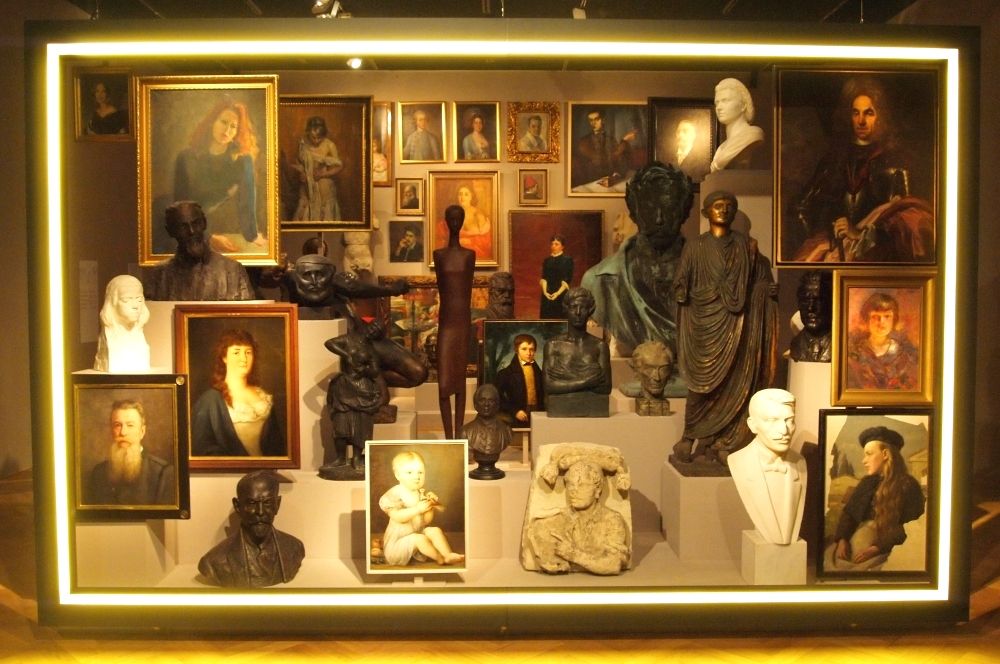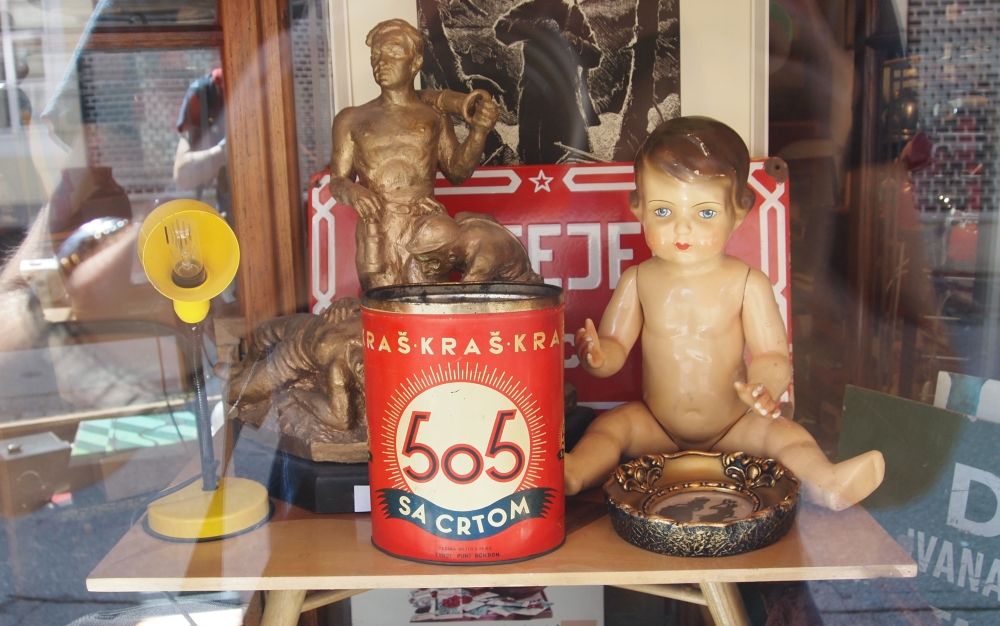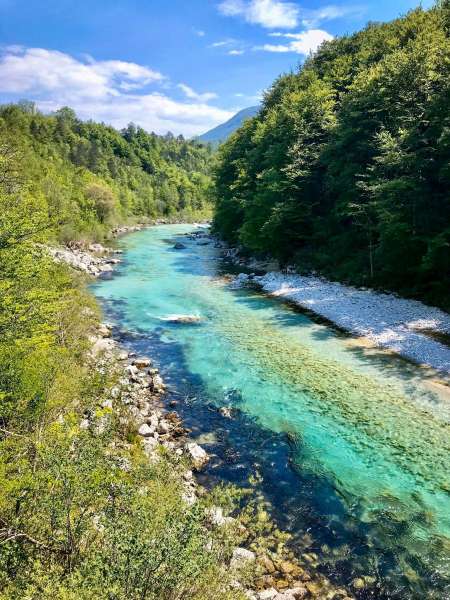News
STA, 28 January 2019 - Prime Minister Marjan Šarec's decision to accept the resignation by Culture Minister Dejan Prešiček triggered mixed responses on Monday. Welcoming the move, trade unions warn that the resignation alone will not be enough, while Prešiček's supporters regret his departure. Coalition parties respect Šarec's decision.
The Glosa trade union of culture and the Trade Union of State Bodies believe that Prešiček's resignation alone will not be enough for the situation to return to normal. More action is needed both at the ministry and wider in culture, they said.
Glosa head Mitja Šuštar said that Prešiček "is definitely not responsible for the old problems, but he is responsible for what was going on when he came and for maybe not tackling the situation as he should have, because we have something called subjective and objective responsibility."
It is essential that the situation at the ministry and wider improves and this will be the task for the new minister, according to Šuštar.
He also hopes that the new minister will tackle the issue of the status of the self-employed in culture and the drawing up of a new collective bargaining agreement.
According to Frančišek Verk of the Trade Union of State Bodies, Prešiček was "obviously just the tip of the iceberg." Some things had been heading in the wrong direction for a while, but now somebody took their own life, he said in a reference to the suicide of a ministry employee which triggered an avalanche of accusations against the minister.
Verk believes Prešiček handing in his resignation was the right thing to do. But he also pointed to "some employees at the ministry, who have been there for decades, enjoying certain privileges they would not have in the private sector."
The head of the Culture Ministry's in-house trade union, Gregor Lesjak told the STA he saw Šarec's decision as a sign that the government would help tackle the situation at the ministry.
"Employees are relieved. Indeed, we must make an effort to improve our relations ourselves, but the understanding and support of the leadership is important in this process. We wish that the new leadership would lend an ear and help tackle all the problems that have piled up in a dignified way," he wrote in a statement.
Several acclaimed figures from the world of arts and culture who had expressed support to Prešiček in the face of bullying and abuse of office accusations regretted his departure today.
The head of the Kapelica Galley, Jurij Krpan, told the STA that the relations at the Culture Ministry had been poor for a decade and that Prešiček had "started putting things right again."
"He created hope that these relations could start changing," he said.
A similar line of thought came from the coalition Alenka Bratušek Party (SAB), with MP Maša Kociper saying that it was not completely clear yet whether Prešiček was indeed a man with a quick temper or somebody who wanted to make changes at the ministry and faced resistance from interest groups.
Other coalition parties said they respected the prime minister's decision and would like the situation at the ministry to be thoroughly investigated.
Prešiček's Social Democratic Party too said it respected the prime minister's decision and was already looking for a new minister.
The opposition New Slovenia (NSi) and the Left, which see Šarec's move as sensible, were critical of the SD, suggesting it had not been not resolute enough when the scandal erupted.
The National Party (SNS) head, Zmago Jelinčič, said he would have kept Prešiček and tackled the situation at the ministry and public broadcaster instead. The Democrats (SDS) would not comment on the matter.
Two journalists' associations, the DNS and ZNP, commented on the resignation by expressing fear that the replacement at the helm of the Culture Ministry would delay the planned overhaul of the media legislation.
"Putting the factors and circumstances that led to Prešiček's resignation aside and looking at the culture sector as a whole, we can see that the minister's resignation and replacement suggests that the much needed changes to the media legislation cannot be expected any time soon," DNS head Petra Lesjak Tušek said.
Political analyst Andraž Zorko meanwhile said that the course of events leading up to today's announcement made the prime minister look like a "winner" because he made the seemingly hard final decision in accepting Prešiček's resignation.
While Šarec's refusal to comment on the affair while in Davos last week made it seem like he was indecisive, Zorko believes that he was trying to give time to Prešiček to hand in his resignation before being dismissed.
Zorko was however not surprised with the move, saying that the dismissal of former Cohesion Policy Minister Marko Bandelli set a high standard and that Šarec had no other option but to let Prešiček go.
STA, 28 January 2019 - The Party of the European Left has nominated Slovenian MP Violeta Tomić of the opposition Left as one of the party's two Spitzenkandidaten for the European Parliament election in May.
What’s a Spitzenkandidaten? According to Wiktionary, “the first candidate on an electoral list, who is often the leader of the respective political party, or the person designated to lead the government in the event of the party winning the election”
In addition to Tomić, the European Left has nominated Nico Cue, the former secretary general of the Metalworkers' Union of Belgium, as the other front runner.
Tomić and Cue were announced as the top candidates on the party's list at a session of its executive committee in Brussels last weekend, the European Left said in a press release on Monday.
Only recently, Tomić was appointed rapporteur on the rights of the LGBT community by the Parliamentary Assembly of the Council of Europe (CoE).
"With these two candidates, we want to make a clear offer to the people of Europe, because we are on the side of those who do not accept the growing contradiction between wealth and poverty," the European Left said in the release.
The Slovenian Left said it saw the nomination as an acknowledgement to the party's work in the European context, adding that it would promote a different Europe, which would not be undermined by neo-liberalism of the centre and populism of the right.
Tomić, who is the deputy coordinator of the Left, could not say if she would also top the Slovenian party's list for the European Parliament election.
Speaking to the press today, she said that the registering of the candidates was still under way, adding that she would make her name available.
The European Left will run in the May election with the slogan "For a progressive exit from the crisis. Vote left in the European Elections".
Elected MEPs from the member parties of the European Left sit in the European United Left-Nordic Green Left (GUE/NGL) group in the European Parliament, which currently has 28 seats in the 751-member legislature.
STA, 28 January - Prime Minister Marjan Šarec on Monday accepted the resignation tendered by Culture Minister Dejan Prešiček, saying that interpersonal relationships at the Culture Ministry were broken to such an extent he could not imagine the current team continuing its work.
The prime minister would therefore like the junior coalition Social Democrats (SD), which put forward Prešiček as minister, to present new candidates for minister and two state secretaries as soon as possible.
Šarec said he believes the entire leadership at the Culture Ministry must be replaced so that the whole situation could be cleared up.
He said he expected concrete results from the new team and the ability to manage interpersonal relations.
Šarec notes a long-standing culture of bullying at the Ministry
The Culture Ministry is a very important ministry in the sense that it preserves this nation's identity, language and culture and makes sure that money is spent efficiently, he said.
Acknowledging the achievements that Prešiček listed in his letter of resignation yesterday, he said that he accepted his resignation so that the situation at the ministry could normalise.
Prešiček managed to raise culture spending and "move things that were in the drawer for a long time." He published a call for applications that was in the making for a decade and had General Rudolf Maister's library in Maribor declared national monument, Šarec noted.
The prime minister said that he had received letters in the past week blaming Prešiček for virtually everything that was wrong as well as those praising the minister to the skies. "I don't feel it's my place to judge on this."
Neither the trade unions nor the employees should celebrate today, Šarec said, calling for self-reflection among all those involved, "including Culture Ministry employees who have been working there since 1990."
He pointed to that fact that 74 reports of bullying or mobbing had been filed at the ministry in the previous term, saying this was cause for concern.
Prešiček, who offered his resignation yesterday in the face of bullying and abuse of office accusations following the suicide of a Culture Ministry employee, would not comment on the PM's decision today.
Prešiček says accusers are liars who hurt cultural workers
In the letter of resignation, Prešiček said he was offering resignation because the "public lynch that happened did not hurt just me and my co-workers but also those in culture who - as Prešeren would say - 'are kind-hearted'."
He said he had decided for the move to show that he was "not an insensitive person as some (media) have tried to portray me."
While denying having bullied the employee, Prešiček admitted to misusing the ministry car. He admitted to using the ministry car for the transporting of his instruments to the Music and Ballet Conservatory, where he served as director until his current job between 2010 and 2018, and where he continues to teach.
Prešiček is the second minister to leave the government after Marko Bandelli was forced to resign as minister without portfolio in charge of development and cohesion policy in mid-November over meddling in the local elections and delays in producing a report on EU funds phasing.
Prešiček is leaving the ministry after just over four months. He was sworn in on 13 September 2018. Nine other ministers have been forced out of the office even quicker so far. The shortest term had Klavdija Markež, who had to leave the Education Ministry in 2015 after only five days on the job following revelations that her master's thesis was plagiarised.
STA, 28 January 2019 - Slovenia appears to be increasingly appealing to foreign students with data from the country's four publicly-funded universities showing they represent 6% of all students. Most of them come from SE Europe.
Of the 65,640 students enrolled at the four universities this academic year, 3,936 are foreigners. Their share thus rose to over 6% from 4.5% in the previous academic year.
Commenting on the data, Miha Zupančič from the Student Organisation (ŠOS) says that foreign students are attracted by the low study costs, good standard of living, the universities' reputation and quality courses.
Most foreign students come from the region of the former Yugoslavia; Macedonia, Croatia, Bosnia and Herzegovina, and Serbia, and EU countries, as well as from far-away countries such as the US and Canada.
Related: Meet the People - Julien Chemin, Erasmus Student & Advocate
Most foreign students enrol at the University of Ljubljana, Slovenia's oldest and largest university. Over the past five years, their number increased from 2,113 to 2,389, so they represent 6.3% of more than 38,000 students there.
The University of Maribor has been seeing similar trends with a similar proportion of foreign students. Their number has risen from 664 five years ago to 920.
By far the largest proportion of foreign students are enrolled at the University of Primorska, rising from 3.7% or 213 foreign students to almost 12% or 572 this academic year.
"The percentage of foreign students is an indicator of the university's international orientation and when it reaches the 10% threshold we can say the university is internationalised," university official Mirella Baruca has told the STA.
The University of Nova Gorica, a private publicly funded institution, enrolled 50 foreign students this academic year. Most of them come from Italy across the border and from former Yugoslav countries.
Most foreign students study economics, and electrical and computer engineering. At the University of Primorska, most foreigners enrol in mathematics, natural sciences and information technology classes.
The universities are increasingly involved in student exchange programmes, mainly through Erasmus+, where the share of mobile students is about 5%.
The University of Ljubljana has 2,122 foreign students on exchange this year. ŠOU data show that most such students come from Spain and Portugal.
"Slovenia is interesting for foreign students because it offers a diversity and beauty of nature in a small area. The colleges are known abroad, they like the people, their friendliness and openness," Mitja Zorič, head of the ŠOU Ljubljana international cooperation department, has told the STA.
Completing their exchange, they would tell you that Slovenia, and Ljubljana in particular, is "designed for Erasmus", being small as well as large, with well organised student dorms, meals, public transport.
What foreign students like best is subsidised meals at restaurants, "they cannot believe the meals are so cheap", Zorič says. They also like the night life and the country's location as a gateway for travel.
Related: Študentski Boni - Why Students Can Eat Out Every Day
STA, 27 January 2019 - Timi Zajc, a 18-year-old ski jumping talent who made his World Cup debut in the last season, bagged his first medal in Japan's Sapporo. He won silver with 238.8 points, while gold went to Austria's Stefan Kraft (248.2 points) and bronze to Japan's Ryoyu Kobayashi (236.6).
Zajc's previous best result was fifth place in Wisla, Poland, last November. "It's great! I'm very happy to have won my first medal. It was definitely worth to take the long journey to Japan," said Zajc, who won Slovenia its 203rd medal in ski jumping World Cup.
"I will never forget this day, my first podium result. I'm very happy with my jumps and I hope to continue in this style."
Other Slovenian ski jumpers did well too, with Anže Lanišek (224.6 points) finishing eleventh, Domen Prevc (220.4) 13th, Anže Semenič (198.6) 24th, and Tilen Bartol (178.4) 29th.
The team coach Gorazd Bertoncelj said this was the most successful event for the Slovenian team this season.
Slovenia will compete with seven ski jumpers in Oberstdorf next weekend.
STA, 27 January 2019 - Culture Minister Dejan Prešiček offered his resignation in a letter to Prime Minister Marjan Šarec on Sunday, the Culture Ministry said. Šarec is to announce his decision on the fate of the minister who has been accused of bullying and abuse of office on Monday.
"I would not wish to anyone what I have been through in the last week. The public lynch that happen did not hurt just me and my co-workers but also those in culture who - as Prešeren would say - 'are kind-hearted'. And that I cannot allow, because I am not an insensitive person as some (media) have tried to portray me," Prešiček wrote in the letter.
"Having said that, dear prime minister, I see only one possible solution, and that is to offer you my resignation as culture minister," he said, noting that a lot of work had been done during his term, some of which would only be noticed in the future.
Prešiček has recently been the target of accusations of bullying employees at the ministry and abusing his office.
He denied having bullied an official who recently committed suicide, while admitting to the accusations of misusing the ministry car.
Being a minister put forward by the coalition Social Democrats (SD), the party leadership discussed the situation on Saturday but would not reveal any conclusions of the debate.
The SD has shown support for Prešiček in the past week, but also said that the decision about his future as minister lies in the hands of the prime minister.
Šarec is expected to announce his decision at a press conference tomorrow morning. According to unofficial information obtained by the public broadcaster RTV Slovenija, he will not accept Prešiček's resignation.
Prešiček said in the letter he had taken on the job in the government with the desire and responsibility to make positive change in the Slovenian culture.
"I believe I have done my job in line with the oath I took in front of the National Assembly."
Among his achievements he highlighted a further rise in culture spending, better drawing of EU funds and "steps to optimise public spending".
He also pointed to the problems he inherited, saying they "erupted in the recent days".
Regretting the "premature and unexplained death of a Culture Ministry employee", Prešiček said it was yet another reminder that ministers must devote more time to human relations on all levels.
He also thanked all those who expressed support to him publicly in the face of the scandal.
The Slovenian Writers' Association (DSP) responded to the situation earlier today by saying that the "chaos we are seeing with the current minister and other officials is a result of the political attitude to culture," a consequence of years of political underestimating and neglecting of culture, which had led to shortages of staff and funds.
"The conflict was inevitable and in a way expected, as the situation reached rock bottom in many areas." The association expects the government to tackle the situation as soon as possible with radical and efficient measures.
Below is a review of the headlines in Slovenian dailies for Monday, January 28, 2019, as summarised by the STA:
DELO
Elderly care
"Higher pensions taken away by more expensive elderly care": The load of the increase in wages for the staff in retirement homes, agreed between the government and public sector trade unions, will be put on the shoulders of the residents or their families. (front page, 20)
Culture minister scandal
"An offer which will be hard to refuse": Culture Minister Dejan Prešiček, who is facing accusations of bullying, offered to resign yesterday and now it is up to Prime Minister Marjan Šarec to announce his decision today. (front page, 2)
Patients' rights
"Who will inform patients?": Patients are increasingly turning to advocates of the rights of patients to ask about their rights and to make complaints as countless healthcare regulations have been changed in the last year. (front page, 2)
Ski jumping
"He realised what he had been announcing for a while": The best Slovenian ski jumper in the current World Cup season, Timi Zajc, finished second in Japan's Sapporo on Sunday for his first podium finish. The 18-year-old is now looking forward to the weekend and the triple-header in Oberstdorf. (front page, 13)
DNEVNIK
Culture minister scandal
"Minister Prešiček resigning over bullying": Faced by bullying accusations, Culture Minister Dejan Prešiček offered yesterday his resignation to Prime Minister Marjan Šarec, who is to announce his decision today. The paper says that there are almost no doubts that he will accept the resignation. (front page, 3, 16)
Health insurance
"How close is abolition of supplementary insurance?": Many have been taken aback by Health Minister Samo Fakin saying that Slovenia cannot afford abolishing supplementary insurance for the time being as they understood that the rates for basic health insurance will increase. (front page, 3, 16)
Handball world championships
"Denmark wins world champions title after beating Norway": The national men's handball team of Denmark beat Norway 31:22 in the finals of the World Handball Championships at home to become the world champions for the first time in history. (front page, 21)
FINANCE
Prices in healthcare
"Will UKCL suppliers really significantly reduce prices on their own? Do you believe that?": The paper doubts that the call from Aleš Šabeder, the director general of the UKC Ljubljana hospital, to suppliers to reduce their prices by at least 10% will be answered. (front page, 21)
Bankruptcies
"A record number of companies went bankrupt last year? What was going on?": Although Slovenia has been recording economic growth in the last three years, the number of bankruptcies reached a record last year. Experts note that a majority of them were "empty bankruptcies" without assets, with creditors being left with nothing. (front page, 2-3)
Interview with labour minister
"Biggest violators of labour legislation should be made public": Labour Minister Ksenija Klampfer said in an interview with Finance that she would make public the names of the biggest violators of labour legislation "so that their colleagues directors see what some do to the people". (front page, 6-7)
VEČER
Pensions
"Pensions: Up two times": Pensions will increase by 2.8% next month as part of a regular indexation, while an extraordinary indexation will be carried out only in December, when pensions will go up by a further 1.5%. (front page, 4)
Culture minister scandal
"Šarec on the move": One day before Prime Minister Marjan Šarec was to announce his decision on the fate of Culture Minister Dejan Prešiček, who is facing accusations of bullying, the minister offered to resign himself in a public letter. (front page, 2)
Ski jumping
"First career podium finish for Zajc": After placing among the top ten for eight times in the past year, Slovenia's Timi Zajc finished second in Japan's Sapporo on Sunday for his first career podium finish. (front page, 18)
STA, 27 January 2019 - Slovenia is marking International Holocaust Remembrance Day, with events coming up in Ljubljana, Lendava and Ptuj today after having already been held around the country earlier this week. University professor Maca Jogan says that remembering Holocaust is important for distinguishing between the perpetrators and victims.
Jogan, professor emeritus from the University in Ljubljana who was the keynote speaker at a memorial ceremony in Ljubljana's Kino Šiška last Sunday, told the STA that equalising the perpetrators with those who suffered under them and fought against them needed to end.
The line between the two sides is being blurred in Slovenia since the 1990s by "all sorts of quasi journalists and then politicians", who wrap it in the language of tolerance.
"Anti-Semitism (with Jews as target) has been replaced in Slovenia in the last three decades with anticommunism (with Partisans as targets and perceived as criminals)," Jogan said.
All our stories on Jewish Slovenia can be found here
This also explains the results of an Eurobarometer survey published earlier this week, which showed that in Slovenia "only" 12% of respondents see anti-Semitism as a problem, while in the EU the share stands at about 50%.
The current situation should be addressed through education and remembrance of concrete victims, concrete perpetrators and concrete circumstances that had led to the crimes of Holocaust. "These were not just political or ideological, there was a big industry behind it."
In education, the danger is to reduce the Holocaust to the suffering of Jews and the Roma, Jogan said, pointing to Italy, where they spoke only of the crimes of Germans against Italians.
She also noted that a number of indicators showed that Israel was monopolising the right to Holocaust remembrance. "This is not acceptable, because overall the number of Jewish victims was lower than of all other victims combined."
In Slovenia, a series of cultural and educational events remembering Holocaust victims is held in January every year.
President Borut Pahor labelled the Second World War the "biggest aberration from moral standards in human history" as he addressed the main ceremony marking International Holocaust Remembrance Day in Maribor on Friday.
International Holocaust Remembrance Day commemorates the genocide by the Nazi regime and its collaborators which resulted in the deaths of an estimated six million Jewish people, five million Slavs, thousands of Roma people, thousands of mentally and physically disabled people, and thousands homosexuals.
Some 63,000 Slovenians were taken to Nazi and Fascist concentration camps during the Second World War and 12,000 of them never returned home.
27 January commemorates the day when Auschwitz-Birkenau, the largest Nazi concentration and death camp, was liberated by the Red Army.
Between 1.1 and 1.5 million people, Jews and members of 26 other nations, mostly Slavic, including 1,700 Slovenians, died in Auschwitz during the war either in gas chambers or during scientific experiments.
The UN declared 27 January International Holocaust Remembrance Day in 2005 and Slovenia has been observing it since 2008.
On the global level, this year's Holocaust Remembrance Day is marked by calls for human rights protection.
The streets are empty in Ljubljana at the moment, making the Old Town look like an abandoned movie set at times. And while it's nice to be able walk around with ease and get seats in cafes it can seem rather lifeless, which is why it's a good idea to go out with a plan rather than relying on street performers, tour groups and serendipity to provide the entertainment. The biggest event this week is probably the MENT festival of independent / alternative music, taking place at venues around town, with more details in the live music section below. There's also a major new show opening at the Moderna galerija's Tivoli branch this Thursday night, on young Slovene painters, where you'll find me stroking my chin and wondering if there's a free bar from 20:00 on - see a couple of the featured works in the museums and galleries section.
If you're in town and it's not the week of January 28 - Feb 03 2019, then you can see the latest edition of this guide here.
Want to hang out with people who love science? Then consider going to Science Bites at 19:00 on Tuesday, January 29. This regular event will be held at ŽMAUC, not far from the Filozofska fakulteta, and three scientists will give three talks in English introducing their work, with details here, and our interview with one of the people behind the series here.
As ever, clicking on the venue names in the list below should get you more details with regard to the time, price and location, as well as other events on at this place in whatever week you're here. Finally, if there's something you want to promote in a future edition of What's on in Ljubljana please get in touch with me at flanner(at)total-slovenia-news.com
- Cinemas and films
- Clubbing
- Live music
- Opera, theatre and dance
- Harm reduction and drug testing
- Things to do with children
- LGBT+ Ljubljana
- Ljubljana Castle
- Museums and galleries
- Other things to do in Ljubljana
- Daytrips
- Getting around
Cinemas and films
You can read about all the cinemas in town here, while a selection of what’s playing this week is below, and note that kid’s movies tend to be shown in dubbed versions, so do check before driving out to a multiplex and dropping off the young ones if they can't understand Slovene. Parents should also pay attention to Kinobalon, which is Kinodvor's regular weekend series of film screenings and events for children, from babies on up, with special parent/child events, "first time in a cinema" screenings, and babysitting. Learn more about it here, and see the current schedule here.
Kinodvor – The arts cinema not far from the train station is showing, among other features, The Old Man & the Gun, Maria by Callas, Women at War, Climax¸ Todos lo saben and Green Book.
Kinoteka – It’s a feast for fans of Lars von Trier this week, with Breaking the Waves, Idioterne, and Dancer in the Dark, while if you’re looking for something from the Japanese legend Beat Takeshi then you can enjoy (in Japanese, with Slovene subs) Hana-bi and Zatôichi. Check out the actor, writer, director who also works as a TV host and comic below.
Kolosej - New at the multiplex in BTC this week are Papillion, Taksi bluz, Serenity, Climax, a dubbed version of How to Train Your Dragon: The Hidden World, and on Thursday Christian Bale as Dick Cheney in Vice. Staying on are Mary Queen of Scots, Glass, The Mule, The Favourite, The Upside, Ralph Breaks the Internet: Wreck-It Ralph 2, of Asterix: Le secret de la potion magique, Second Act, Južni veter, Bumblebee, Second Act, Aquaman, a dubbed version of Spider Man: Into the Spider-Verse, Robin Hood, The Grinch, Johnny English 3, A Star is Born and the #1 box office film of 2018 in Slovenia, Bohemian Rhapsody
Komuna – The cinema in a basement behind Nama department store is showing Bohemian Rhapsody, A Star is Born and Mary Queen of Scots.
Clubbing
Compared to some European capitals it can seem that nightlife in Ljubljana ends rather early, especially along the river, but there are still bars that stay open late and clubs were you can dance until dawn, and perhaps the best place to stumble across something interesting is the legendary Metelkova. Be aware it's a grungy kind of place and not for all tastes, but also that there's considerable variety to found within the various clubs there, from death metal to electropop, gay cabaret to art noise. You can read "the rules" of the place here.
Channel Zero – Monday night there’s Domaćica Original: Dj CLASH, with reggae, dancehall, drum’n’bass, ska, dub and so on. A Dub Lab project.
Gala Hala – MENT arrives in Metelkova on Friday with Hyperboloid Night, with sounds from A.Fruit, Bad Zu, Raumskaya, Saburov and Summer of Haze.
Klub Cirkus – Friday dress for the UV with BLACK MOON – UV Gathering #6, with sounds from LVN x TIM BLACK. Saturday it’s an all-nighter with El Fuego, playing Latino flavoured pop, r&b, dance, reggaeton, Latin house, tropical, and island beats, with the music from Matthew Z & DJ Papi.
Klub K4 – Friday it’s K4xMENT with Batu_music, Lawrence Le Doux, JANKA, Mistakes, TizTiz, Staša and Krilc. Saturday there’s an all-nighter called Knauf, with music from RSN, Shekuza and Tritch.
Orto Bar – Saturday night there’s a DJ show paying tribute to the longest working act in rock’n’roll, The Rolling Stones, with DJ Martin13 playing music from the band and related artists.
Live music
The MENT festival runs from January 30 to February 1 and has at least 75 performers on stages around town, including the Castle, Kino Šiška, Orto Bar, Old Power Plant, Celica, Gromka, Gala Hala, Channel Zero and Menza pri koritu . The schedule is here and has links to all the artists, including shishi, from Lithuania.
Cankerjev dom – As part of the Cankarjevi torki (Tuesday Clubbing) series the stage will be given over to Bombyx Lori and the Jimmy Barka Experience on Tuesday the 29th. The same night the pianist Richard Goode will also be in the country’s main arts centre, playing JS Bach, Beethoven, Berg and Chopin, including the following piece.
Channel Zero – Saturday there’s Snovonne from Slovakia playing rock / metal.
Orto Bar – Tuesday belongs to metal, with the entertainment coming from Brainstorm, Mob Rules, and Gloryful. Saturday then sees a live show from Blasius.
Pinelina dnevna soba – Saturday evening there’s Chloé Mons and Chris Eckman, as heard below.
Slovenska filharmonija – Saturday morning, 11:00, there’s a family concert of the Ugly Duckling, while at 19:00 the same day there’s another new year show, this one called Quiet Please!, with a programme of Strauss, Xenakis, Ligeti and others, including the piece after this text. Sunday there’s the Trobilni Quintet and Martin Belić.
Opera, theatre and dance
Gledališče IGLU - IGLU Theatre – Saturday night this group is usually putting on an English improv show somewhere in town, but it’s generally promoted after this is written, so check the Facebook before putting on your shoes.
Klub Gromka – Wednesday night there’s poetry and music with an event called IGNOR 21.
Mini Teater Ljubljana – The English schedule of varied performances for the month is here.
SNG Opera and Ballet – Friday and Saturday there’s stagings of Smetana’s The Bartered Bride.
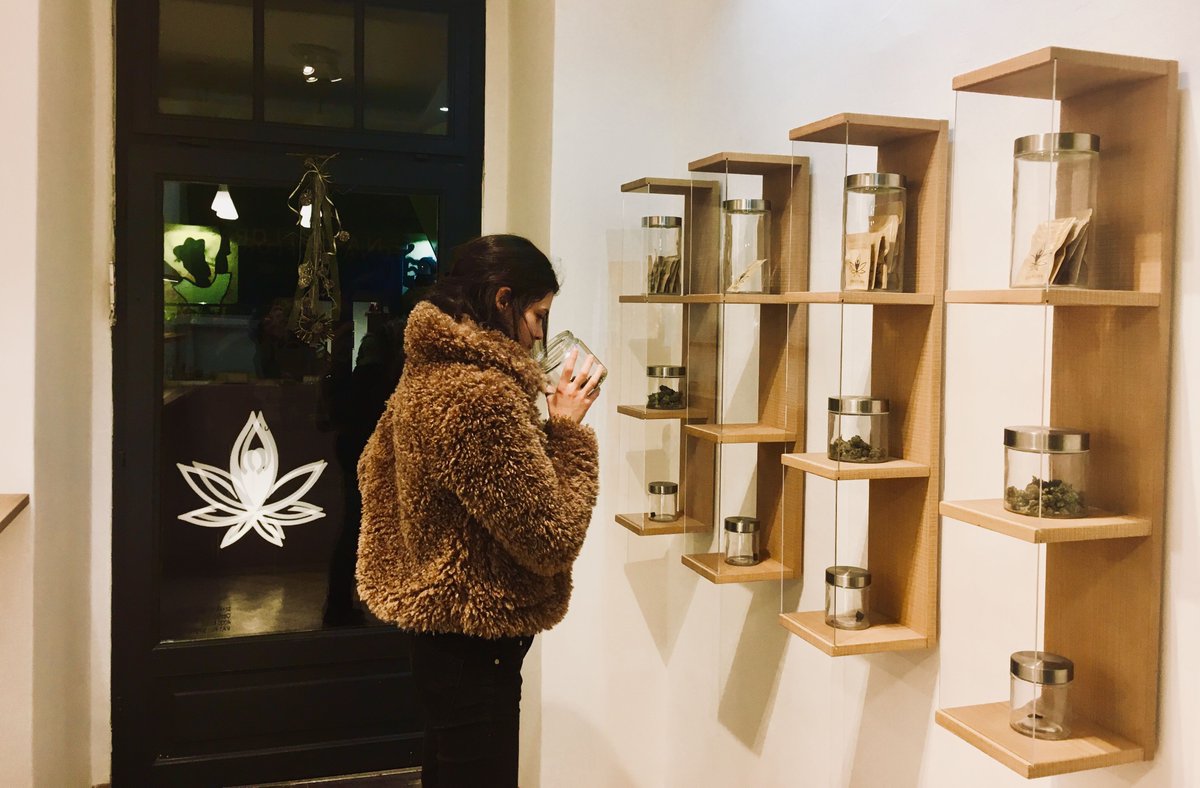
Sena Flora is a new store selling CBD products downtown (more)
Harm reduction and drug testing
Drogart is an organization that aims to minimise harm on the party scene, and offers drug-testing services and reports on their webpage. It’s in Slovene, but you can Google translate it or work things out yourself, and our story on the group is here. They recently published a story warning about three pills with very high contents of MDMA, with details (in Slovene) here. Also be aware that all the usual drugs are illegal in Slovenia

Eating ice cream in winter in Ljubljana - learn more about some of the options downtown here. Photo: Gelateria Romantika
Things to do with children
You can find our Top 12 list of things to do with kids in Ljubljana here. If want to read more about the philosophy behind the wonderful House of Experiments look here, while our trip to the Museum of Illusions is documented here, and there’s always riverside walks, pizza and ice cream. With regard to the latter, take a look at our guide to six places that serve good ice cream in winter.
Mini Teater Ljubljana – The season sees a lot of puppet performances for children, in Slovene, at this theatre not far from Križanke. The English schedule for the month is here.
Ljubljana Puppet Theatre - The puppet theatre near the Central Market and next to the Castle funicular has a full programme or shows, for children and adults, with the schedule here.
LGBT+ Ljubljana
If you want to learn more about Ljubljana Pride, then take a look at our interview with its president here. If you're looking for more general links on "gay Slovenia", including a history of the scene and various projects, then you can find that here, while our stories about the community can be found here.
Klub Monokel – This lesbian bar in Metelkova is open every Friday
Klub Tiffany – And the gay bar next door is also open on Fridays, while every Monday until June 2019 there's tango at 18:00. Monday 19:15 there’s also LFU: delavnica radikalne skrbi zase, while 20:00 Thursday there’s Tiffany ARTikulacija: Pogovor z umetnikom Xiyadiejem.
Pritličje – This seems to be the only "always open" LGBT-friendly cafe / bar / events space in town, and perhaps the country, so it's a good thing it's such a good one, open from morning to night, and with fliers and posters letting you know what's happening outside the narrow confines of, say, a general interest online what's on... guide.
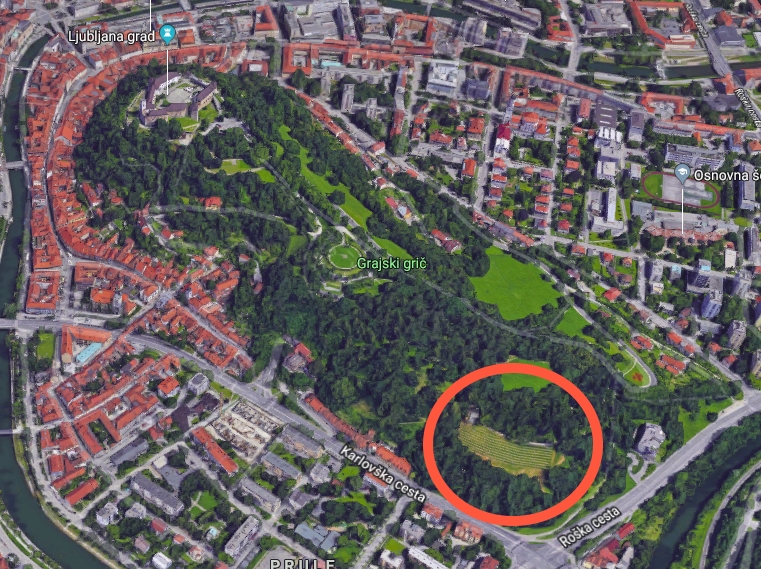
Screenshot from Google Maps, showing the location of the Castle vineyard
Ljubljana Castle
The city’s main attraction is said to be the top tourist draw in the country overall, and to my mind it earns a spot near the top just for the history and views. But beyond that the current owners, the City of Ljubljana, have laid out a varied, interesting and enjoyable programme of events, one that rewards regular revisits.
I try and get up there every Saturday morning to clear my head and move my feet on the trails, and never tire of that end of the hill. At the other end, where the Castle sits, there’s a lot more than fresh air on offer. There are guided tours, restaurants, a café, Castle museum, puppet museum, a Watchtower you can climb to the highest point in the city, art shows, dances, live music, movies under the stars, festival days and more – enough to reward multiple trips up the hill through the year. All of these activities and events can be found on the Castle website, while on TSN you can see “25 things to know about Ljubljana Castle” here, and “Ten Ways to Enjoy Ljubljana Castle” here.
Museums and galleries
Most public galleries and museums are closed on Mondays, although not the National Museum.
Plečnik's desk. Photo: JL Flanner
Plečnik’s House is worth a visit if you want to learn more about the architect who gave Ljubljana much of its character. Read about our guided tour here.
Cankerjev dom – On until February 28 is the exhibition Ivan Cankar and Europe, Between Shakespeare and Kafka, while until March 10 there’s a photographic show on the Ljubljanica, with images of the city’s river captured by Bojan Velikonja. Showing until the end of March is a selection of specimens from The Newspaper Museum.
City Museum – The Museum in French Revolution Square also has an exhibition on the writer Ivan Cankar that’s on until the end of February 2019, with pictures, books and manuscripts, all presented in Slovene and English. It also has a very interesting permanent exhibition on the history of Ljubljana, from prehistoric times to the present day, with many artefacts, models and so on that bring the story alive.You can read about my visit here. Until March 2019 there's a show highlighting the work Elza Kastl Obereigner (1884-1973), a pioneer Slovenian sculptress, with an example of her work shown below.
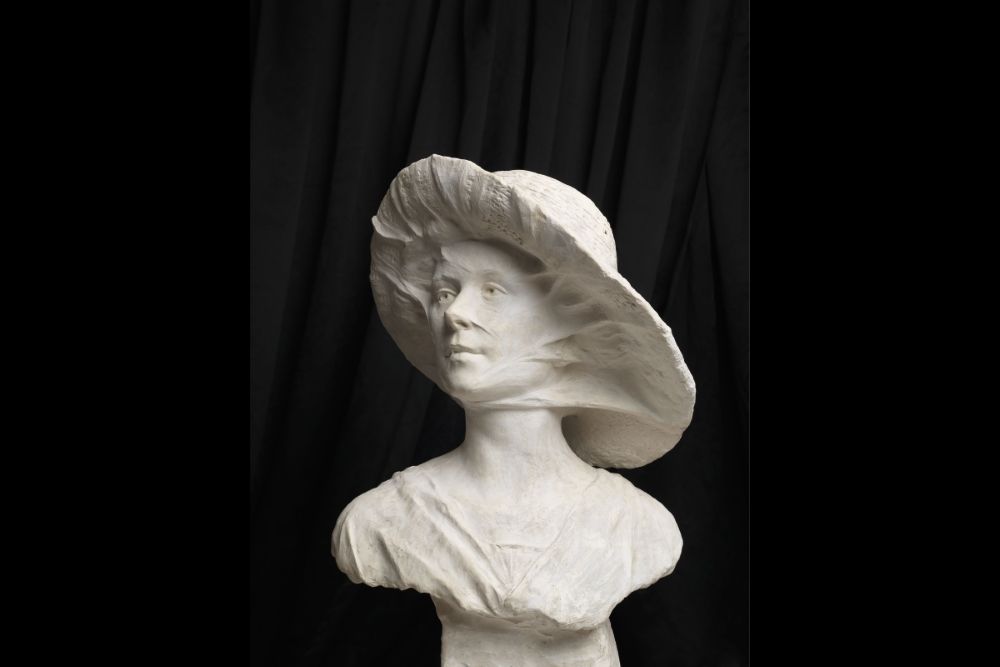
Photo: M Paternoster
The Faces of Ljubljana in the City Museum. Photo: JL Flanner
Galerija Jakopič – On until March 3 is Over My Eyes (Na moje oči), an exhibition of photographs from Iraq taken by Iraqi photographers.
International Centre of Graphic Arts – Running from Friday until March 3 2019 there will be a show of posters from Milton Glaser, while paintings, drawings, prints and from Nathalie Du Pasquier in a show called Fair Game. The latter is being promoted with the following image.
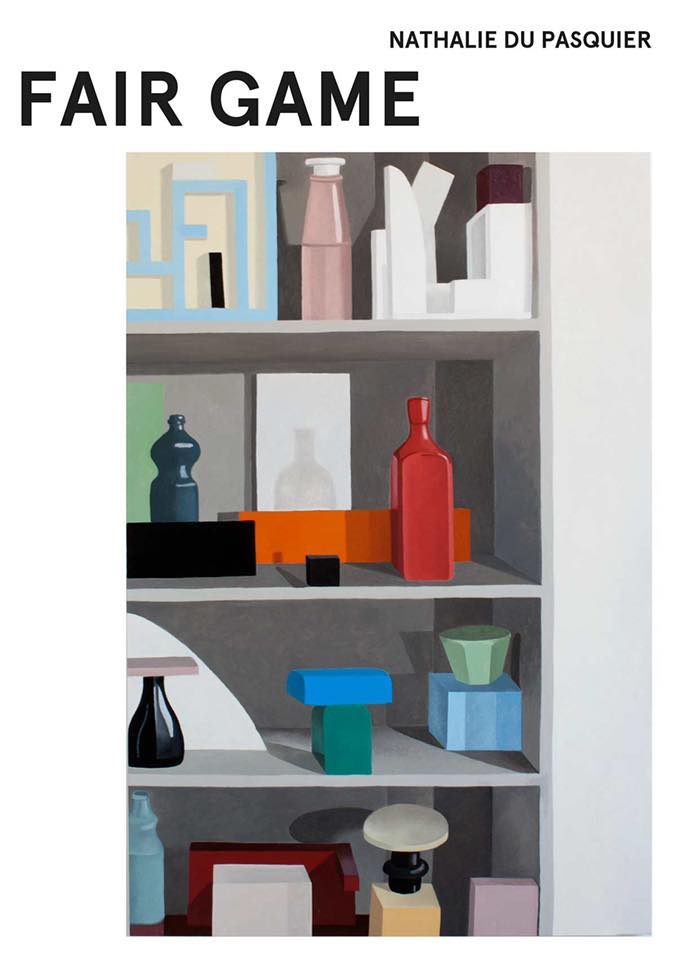
MAO – The Museum of Architecture and Design has much of what you'd expect, and until March 25, 2019, has a show on Ljubljana and it's relation with water. Until February 24 visitors can enjoy Toasted Furniture, which presents some experiments with the reuse of plastic waste, and until February 28 there's a show on Oskar Kogoj and his chairs.
Moderna galerija – The main branch of this gallery, to be found near the entrance to Tivoli Park, has a good collection of modern art, as well a nice café in the basement. Running until March 31 is a major show on young Slovenian painters, Time Without Innocence – Recent Painting in Slovenia, where you’ll see works like the following.
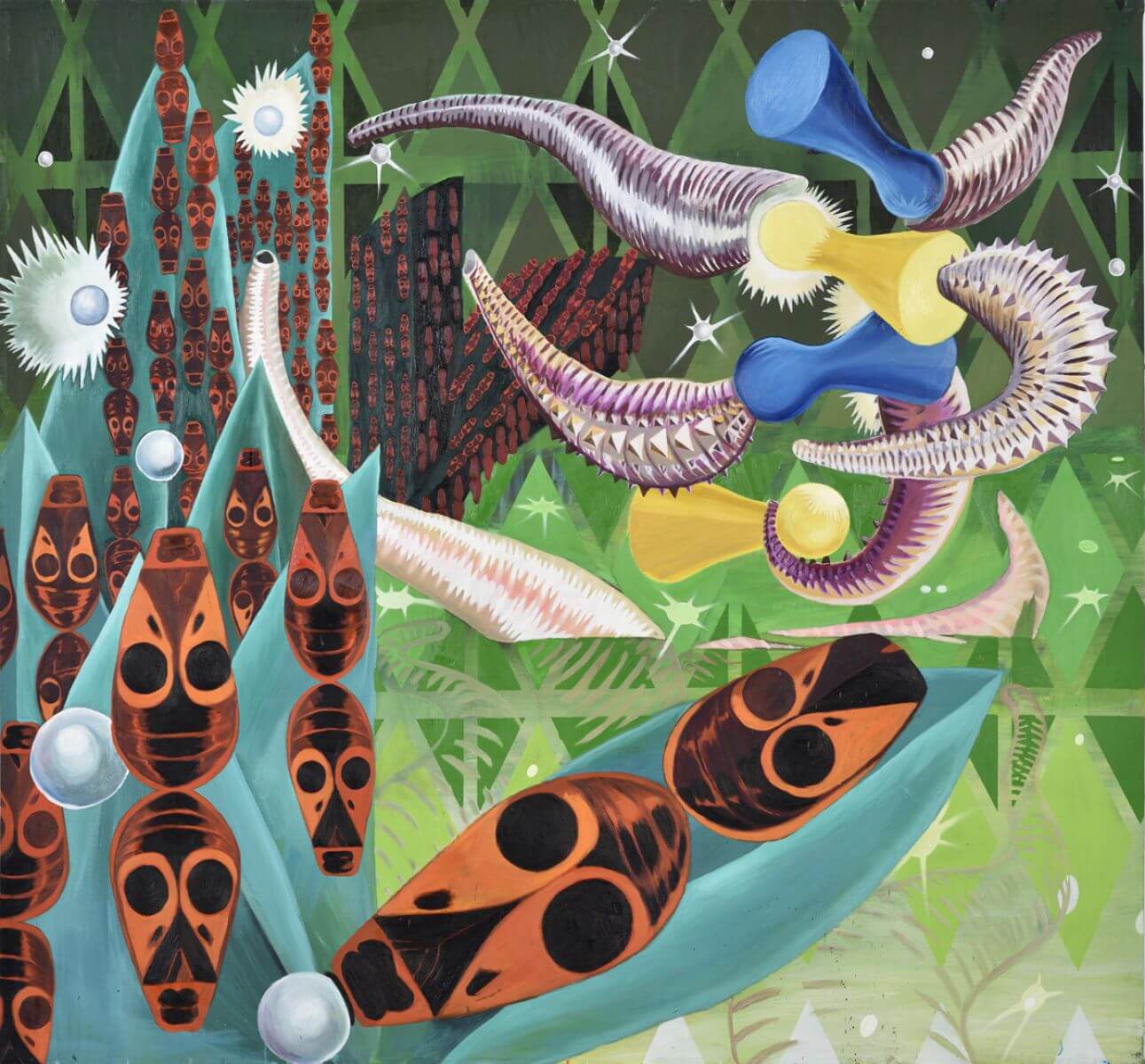
Iva Tratnik, Mating Season Totalitarianism, 2014, oil on canvas, 210 x 194 cm
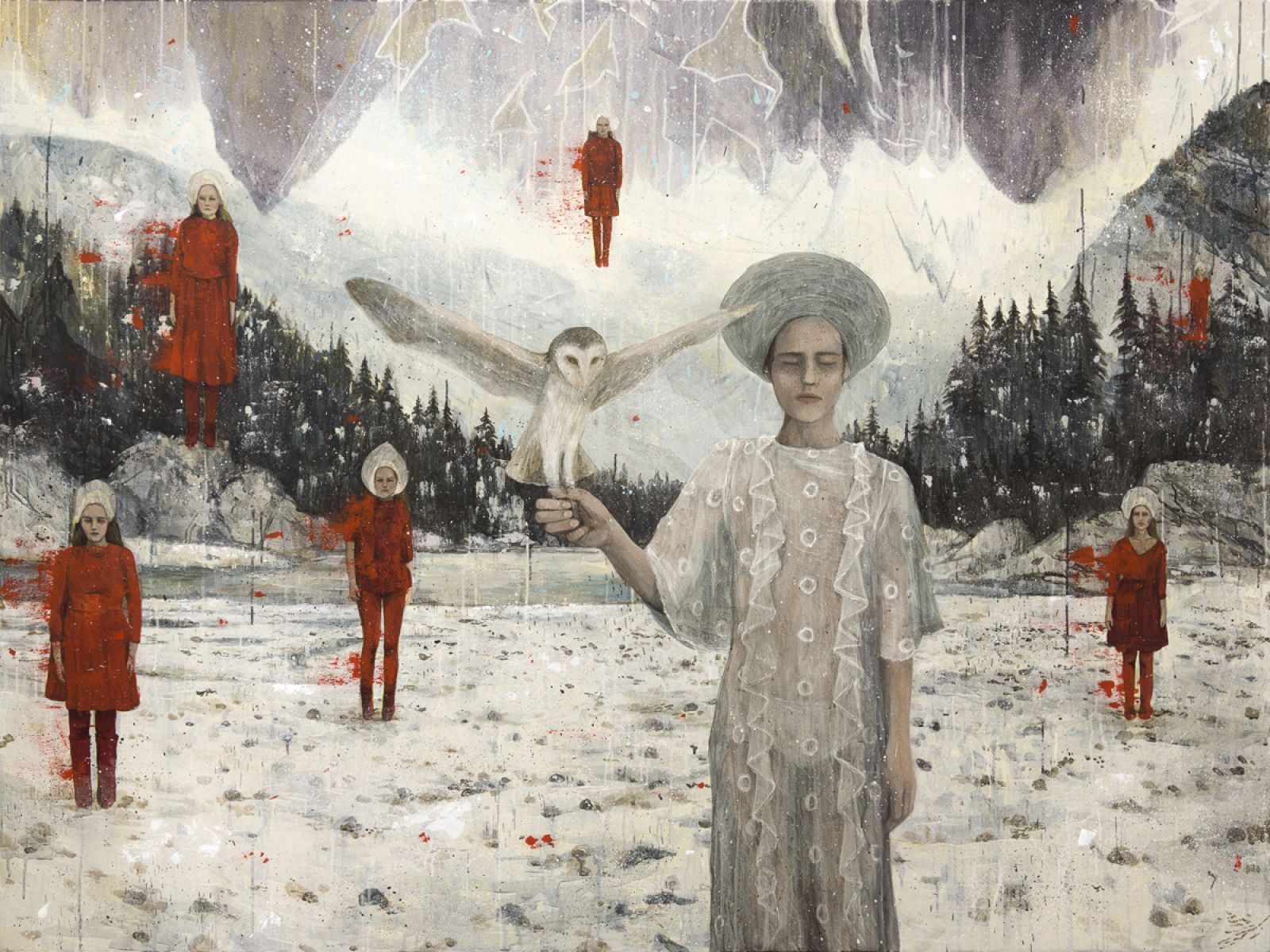
Tina Dobrajc, The Balkan Saga II, 2017, acrylic on canvas, 200 x 150 cm
National Gallery – The country’s main gallery has “the best” of what’s on offer from the Middle Ages to non-contemporary modern visual arts, and is in a great location for exploring other areas, just by Tivoli Park and opposite the main branch of the Moderna galerija. Running until February 10 2019 is a show called Ivana Kobilca (1861-1926): But Of Course, Painting Is Something Beautiful!, featuring works like the one below. You can read about our visit to the room containing sacred art from the Middle Ages here, and see a picture from our trip after the two girls.
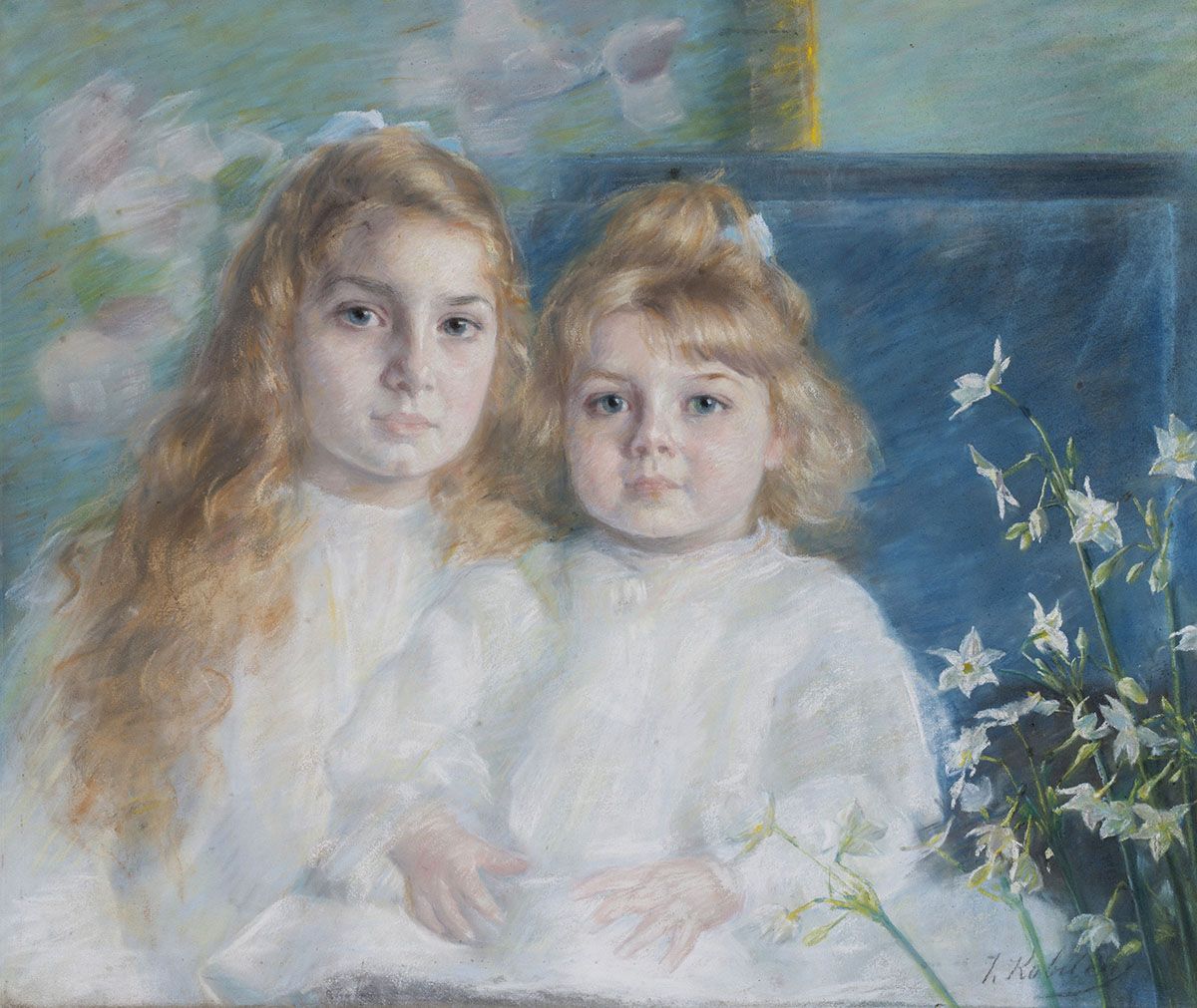
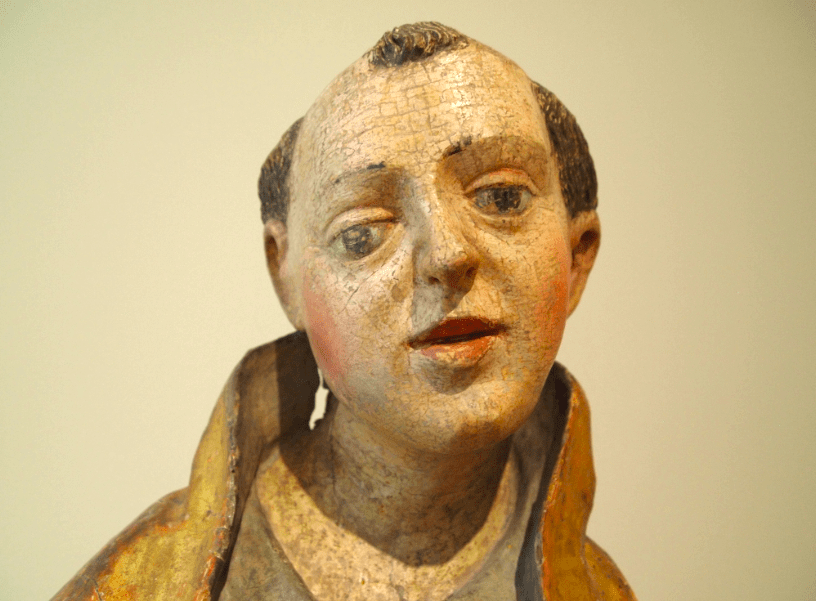
JL Flanner
National Museum of Slovenia – There’s plenty to see in the permanent collection here, from Roman times, Egypt and more, with the big draw this season being the exhibition of over 140 items of gold from Ming Dynasty China, as reported here, and with an example below. This runs until February 15th.
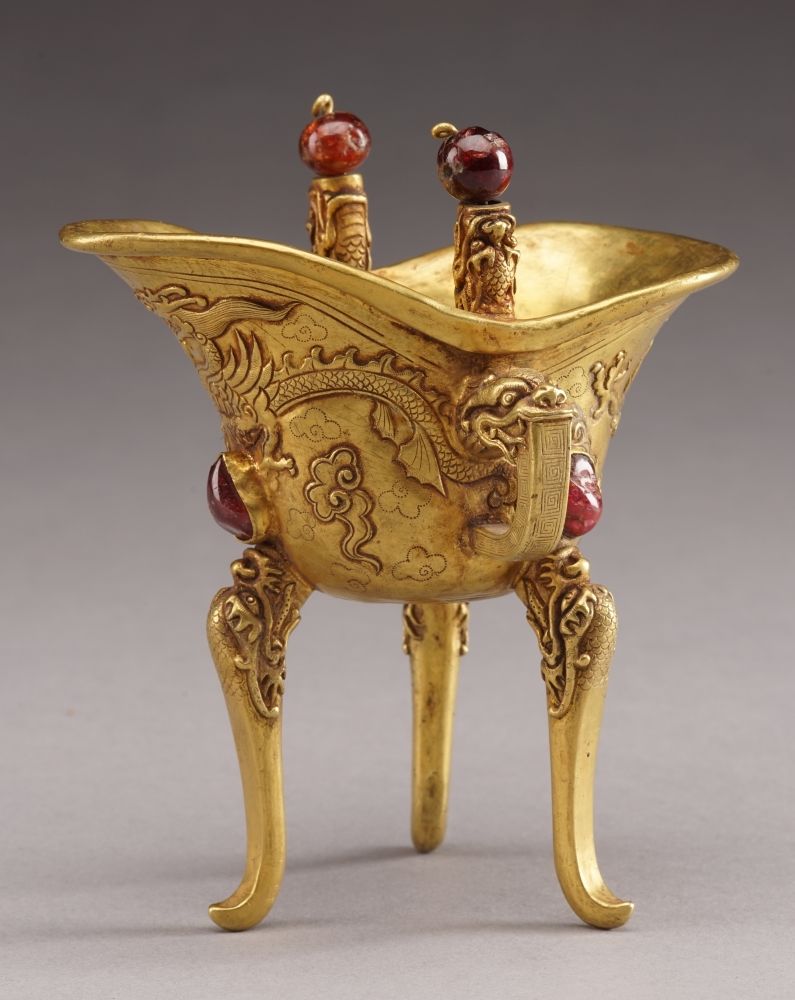
Photo: Wang Wei Chang
Meanwhile, the museum's Metelkova branch, located between one branch of the Moderna galerija and the Ethnographic Museum has some rooms on Church art, furniture and weapons, with the latter including more guns than you'll see anywhere else in town, and quite a thrill if coming from a nation where such objects are not household items.
Natural History Museum – On until the end of June 2019 is Our Little Big Sea, which takes a look at the oceans.
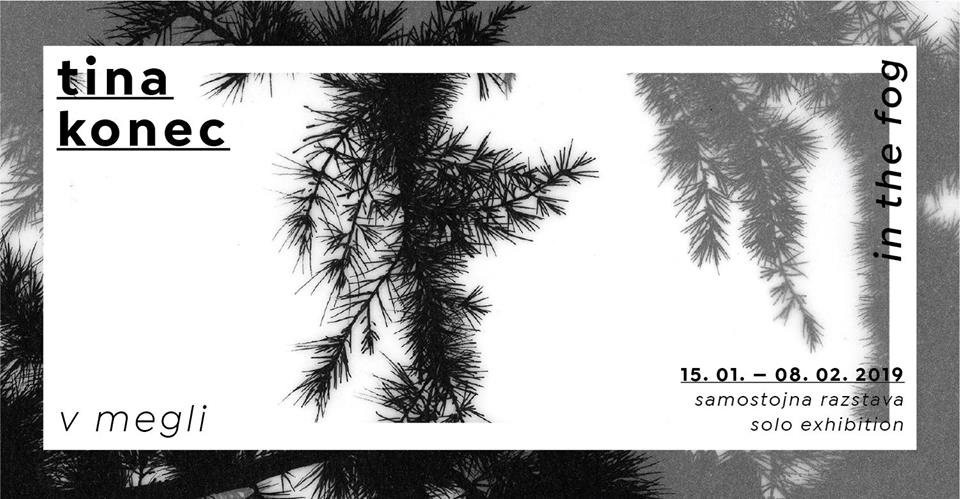
Ravnikar Gallery Space – Tina Konec has a show here until February 8, v megli (In the Fog).
Slovene Ethnographic Museum – The museum currently has a temporary show on Bees and Beekeeping, on until June 16 2019, as well two permanent exhibitions. One of these is called Between Nature and Culture, and has a great collection of objects from Slovenia and around the world, well worth the trip up to the third floor to see it (as recounted here). This place is located near the newer branch of the Moderna galerija and Metelkova.
Union is "the Ljubljana beer", but now both it and Laško are owned by Heineken. There are many local brews on offer around town, though, if you want to explore IPAs, stouts, wheatbeers, sours and so on Photo: JL Flanner
Union Experience – The Ljubljana-based brewer has a museum showing the history of the company, with the ticket also including access to part of the factory and a few samples of the product. You can read about our visit here.
It's not a formal museum, but if you're interested in "Yugo-stalgia" then you'll enjoy a trip to Verba, a small, privately run space that's crammed with objects and pop culture items from the era, and is conveniently located at the start of one of the short walks to the castle. It's also a great place to take pictures, if you leave a donation, and you can read more about it here.
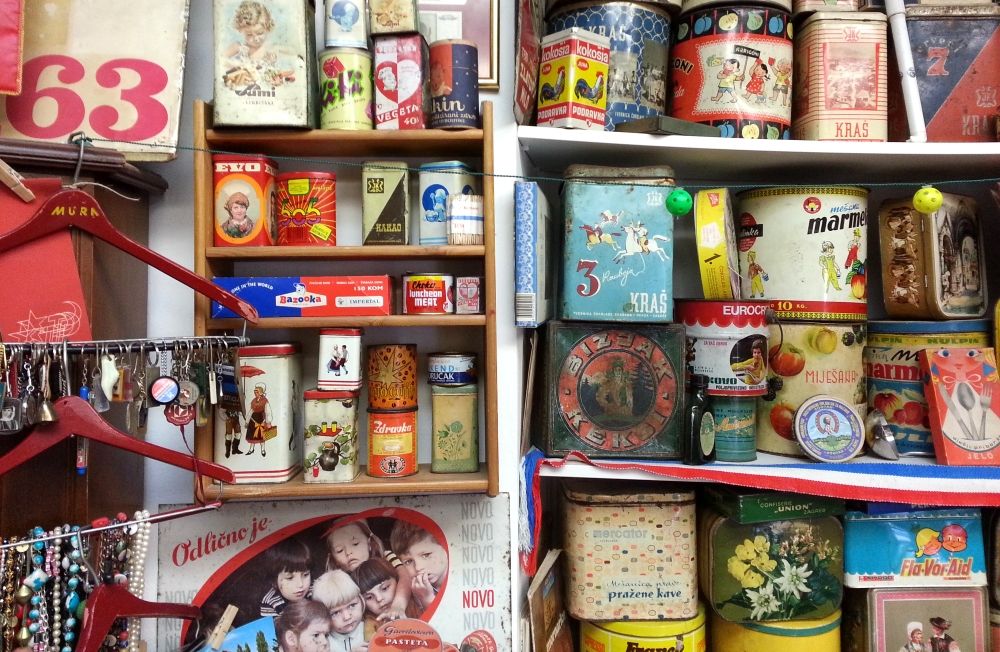
Verba. Photo: JL Flanner
Alternative Ljubljana isn't a museum or gallery, as such, but instead turns the city streets into a museum and gallery. Learn more about their tours of street art, history and LGBT Ljubljana here.
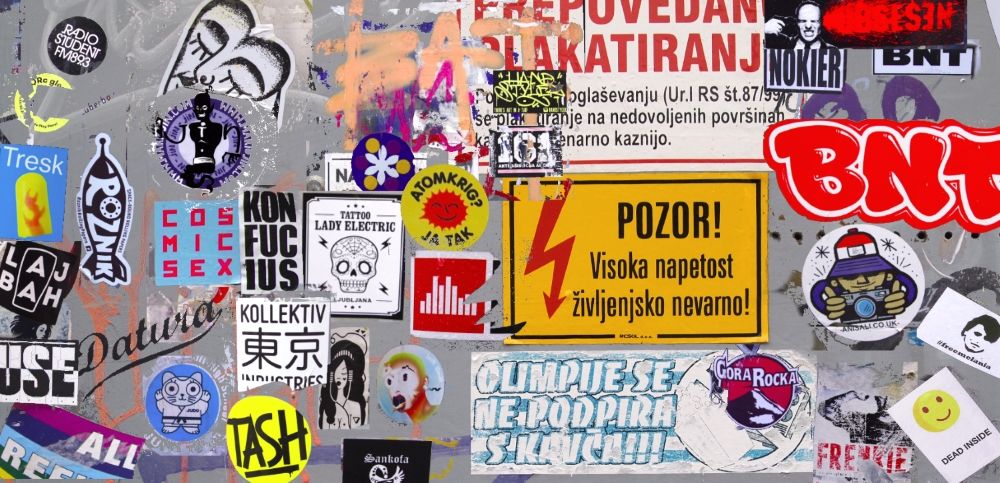
Photo: JL Flanner
Other things to do in Ljubljana
If you'd like to spend an evening painting with others, then take a look at Design with Wine, which organises painting parties on Trubarjeva cesta,
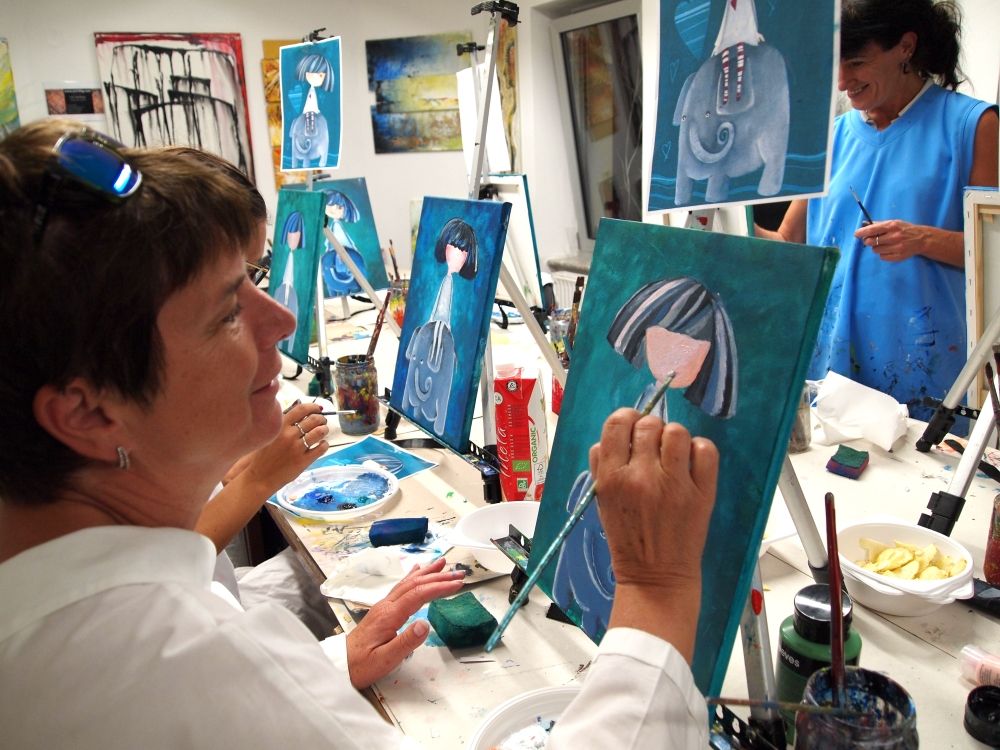
If you want to see some antiques, then check out the wonderful Antika Carniola, as discussed here. The man behind it, Jaka Prijatelj, has a fine eye for life on this street, as you can see on his Facebook account.
Photo: JL Flanner
If you’re in town and want to go jogging or walking in nature, why not take another look at the Castle, with a brief guide to the trails here. If you want something bigger, head to Tivoli Park.
And if you're bored with the Old Town, why not take a walk, cycle or boat ride to nearby Špica and enjoy the riverside life. Learn more about that here.
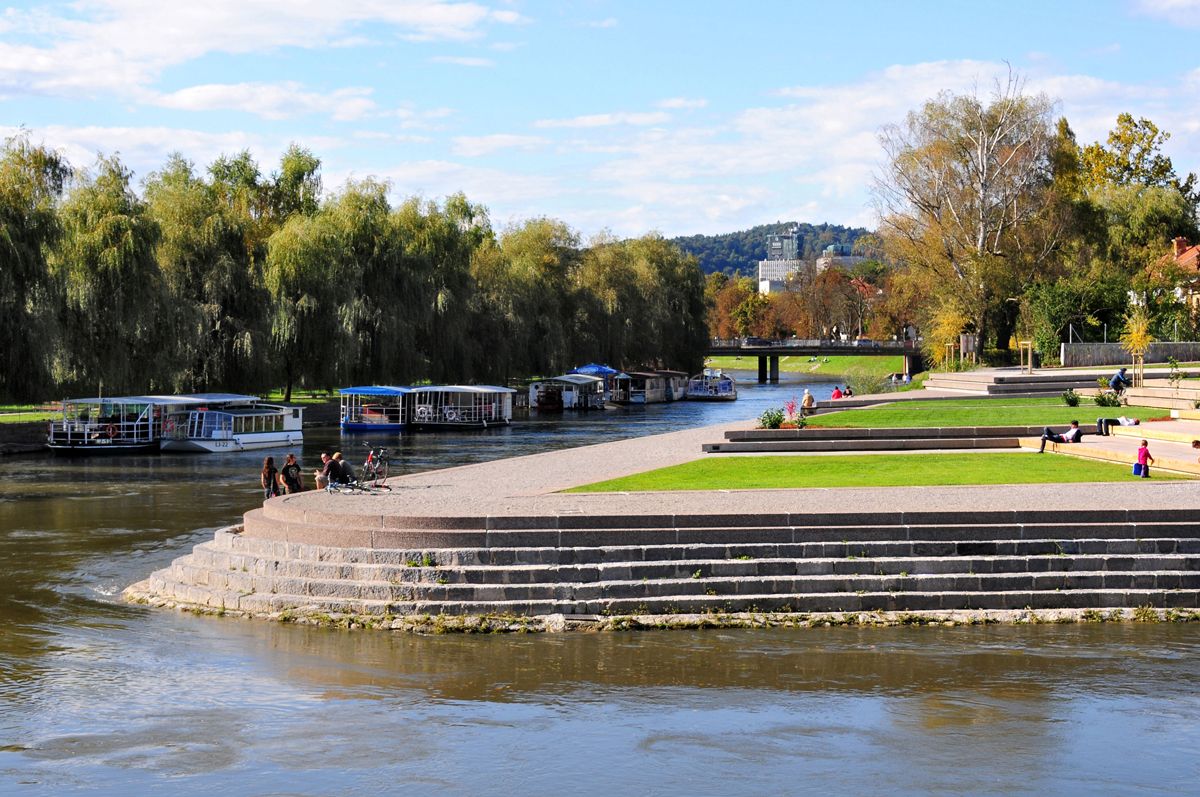
visitljubjana.si
![]()
maxpixel.net, public domain
Want to stretch and breath? Then check out our list of drop-in yoga classes for tourists, visitors and the uncommitted. If you're heading to the coast, check out our interview with a yoga teacher who offers breakfast sessions there, while if you're staying in town (or nearby) and want to try some "family yoga" then you can learn more about that here and maybe get your kids to calm down a moment or two.
There are some golf courses near Ljubljana, but even ones further away are not far, as seen in our list of all the golf courses in Slovenia. Note that these close when the snow starts, if it ever does this year, in which case you might be interested in what's new at Slovenia's ski resorts for 2019, as reported here.
![]()
Photo: maxpixel.net, public domain
Daytrips
Most of Slovenia is only a few hours from Ljubljana, and you can easily visit Lake Bled, Lipica Stud Farm, Postojna Cave, Predjama Castle, the coast and other locations, while if you'd like to take a photo of from that bench in Bled, then you can learn how to get there here. If you’re looking for something more ambitious, then check out our recent guide to the 17 members of the Association of Historical Towns of Slovenia
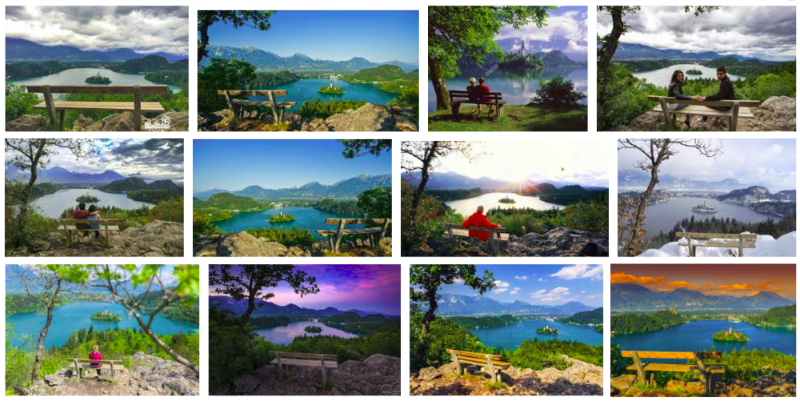
Photo: Google Image Search
Getting around
If you want to get a Ljubljana Tourist Card, which gives you travel on the city buses and entry to a lot of attractions, then you can read more about that here, and if you want to use the bike share system, as useful for visitors as it is for residents, then you can learn more by clicking this. Visitors with reduced mobility will be pleased to find that downtown Ljubljana is generally rated as good with regard to accessibility, and that there’s a free, city-sponsored app called Ljubljana by Wheelchair highlighting cafés, attractions and so on with ramps, disabled bathrooms and Eurokey facilities, which you can read about and download here. If you’re driving into town and don’t know where to part, our guide to how to park in Ljubljana is here.
There aren't many places to eat after midnight, and most of them are by the train station, as reported here.
Want / need cigarettes but the stores have closed? Here's an incomplete list of bars downtown that will satisfy your craving for the demon weed. While if you’re having trouble with the ATMs then here’s a guide to the Slovene you’ll see on screen. If you get a hangover then find out where to get paracetamol (and prescription drugs) in Ljubljana here, while details on emergency birth control can be found here.
Ljubljana is a small and relatively safe city, but if need to contact the police then there’s a special number for foreigners, and that’s 113.
If you wonder why we don’t write much about Melania Trump then there are a number of reasons, but first and foremost is the strength of her Slovenian lawyer (the highly qualified, competent and respected Nataša Pirc Musar) and the fact that almost anything interesting or amusing we’d write would require legal support that’s beyond our means. A reminder to tread carefully in this regard comes today from The Daily Telegraph (UK), which published an apology for what it says are mistakes in an earlier story, “The Mystery of Melania Trump”, written as a review of a new book, Golden Handcuffs: The Secret History of Trump's Women, and now scrubbed from the Internet.
The newspaper has thus apologised unreservedly, as well as paying Mrs Trump’s legal fees and “substantial damages”, and made the following corrections and clarifications:
Mrs Trump’s father was not an overbearing and controlling man
Mrs Trump did not leave her Design and Architecture course at the University of Ljubljana in relation to the completion of an exam, but rather to pursue her career as a professional model.
Mrs Trump was not an unsuccessful model before meeting Mr Trump, nor did Mr Trump help her career.
Mrs Trump’s mother, father and sister did not move to New York in 2005 in order to live in buildings owned by her husband.
Mrs Trump did not cry on election night.
The full apology can be found here.
STA, 25 January 2019 - The prostitution ring dismantled by Slovenian police two days ago was led by two Slovenian citizens and is estimated to have made at least EUR 14m from the illegal business, a police official said on Friday.
The National Bureau of Investigation (NBI) has led the investigation into prostitution, human trafficking and drug abuse from September 2014 in the areas of Nova Gorica, west, and Maribor, north-east, NBI deputy director David Antolovič said at a news conference in Ljubljana.
At least 300 women have been offering sexual services since then in a hotel with a spa in the area of Nova Gorica. They all came from abroad, mostly from Romania, Ukraine, Albania and the area of the former Yugoslavia.
The police investigation has found that the ring with at least 14 identified members was led by a 50-year-old and a 35-year-old from the area of Maribor. "The ring was hierarchically organised, with roles being clearly assigned," said Antolovič.
The suspects had renovated a building near Nova Gorica, which was advertised as a sauna, spa and wellness with a touch of eroticism, which was a cover for abusing women for prostitution under a set of strictly defined rules.
Only men were allowed to enter the hotel, for which they were charged an entrance fee of 60 to 85 euro. Women could be there only as prostitutes; to get to the hotel, they had to book an appointment online, and pay an entrance fee of 70 euro.
"The suspects controlled the victims all the time and set the price of their sexual services," said Antolovič, noting the victims were "totally subdued".
If they failed to obey, they were barred from the premises, he said adding they had opted for prostitution convinced this was the only way in which they could make a living.
Eight suspects were detained on Wednesday, with six remaining in custody, including the ring leader. They were to be brought before an investigating judge today.
They are suspected of eleven counts of abuse of prostitution, human trafficking, and illegal production and sale of drugs.
Under Slovenia's penal code, abuse of prostitution is a crime which carries a prison sentence of three to 15 years, human trafficking three to twelve years, and drug production and sale from one to ten years.
According to Antolovič, "the investigation was very demanding, because the suspects were very well organised and consistent in hiding the abuse".
"It was difficult to gather evidence because they had invested a lot of effort and money into trying to show they were engaged in a legal business."
This is one of the largest cases of prostitution ever discovered in Slovenia, where prostitution is decriminalised.
However, it is a crime to exploit or abuse sex workers, which is often linked to human trafficking.
Slovenia is a destination country in human trafficking, and the victims are most often exploited at night clubs or apartments rented by criminal rings.



